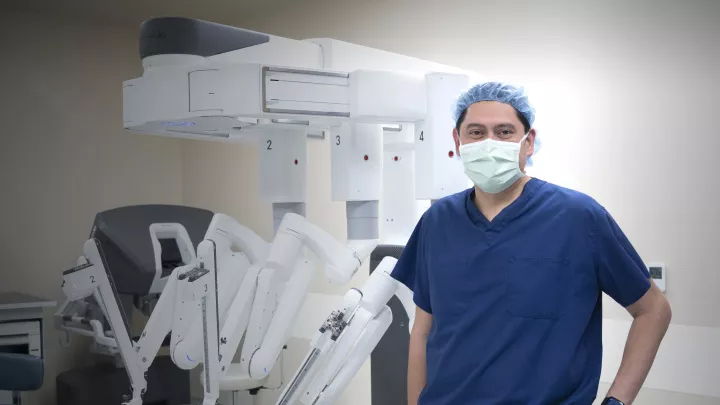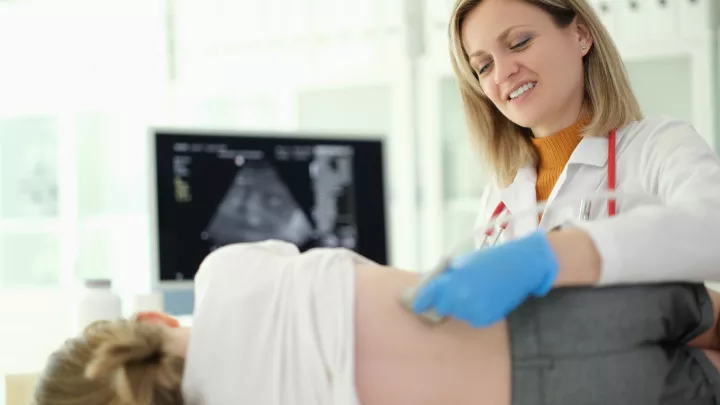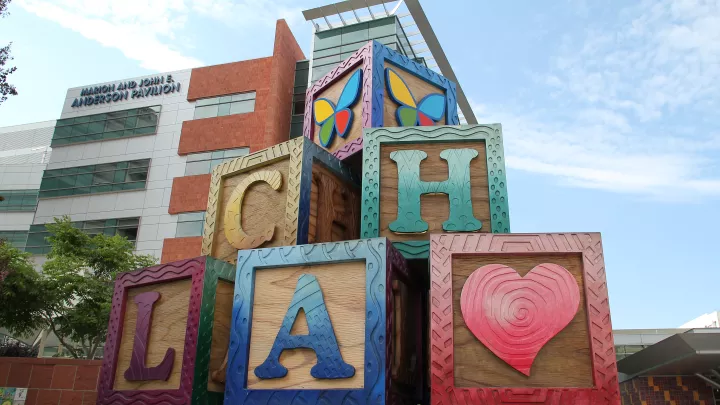Minimally Invasive and Robotic Urology Surgery
If your child has a urological condition that requires surgery, you can trust the care at Children’s Hospital Los Angeles. Our surgeons are highly experienced in all types of pediatric urology surgery, including the least invasive methods available.
Our advanced surgical methods require smaller incisions, helping children recover faster. With these techniques, children experience less pain and scarring and a shorter hospital stay.
Urology Surgery: Why Choose Us
Our surgeons’ expertise allows us to use tiny incisions to correct conditions once only treated with major surgery. We customize the procedure based on your child’s specific needs.
We use minimally invasive and robotic techniques whenever possible. But in cases where open surgery is a better option, we discuss this with you. Our surgeons have the expertise and experience to help you choose the best treatment for your child.
Your care with us involves:
- Nationally recognized expertise: U.S. News & World Report rates our Division of Urology as one of the best programs in the nation. Our surgeons perform hundreds of minimally invasive pediatric urology surgeries each year at our top-ranked children’s hospital.
- Pediatric focus: Our pediatric urologists focus exclusively on the needs of children. This specialization ensures our surgeons are experts in child-friendly approaches and achieving successful outcomes. Meet our pediatric urology team.
- Robotic urology expertise: We are the only program in Southern California offering pediatric urology robotic surgery. Robotic surgery offers less scarring and a faster recovery. Only specially trained surgeons can perform this type of surgery.
- Advanced laparoscopic surgery: Our surgeons perform advanced laparoscopic surgery techniques. Laparoscopic surgery uses a small camera and slim instruments to perform surgery. This approach allows for smaller incisions and shorter recovery times. Our surgeons often use our highly precise da Vinci Surgical System for pediatric urology laparoscopic surgeries, leading to better outcomes for delicate procedures.
- Excellence in endoscopic surgery: During endoscopic surgery, the surgeon inserts a thin instrument and camera through a natural body opening, such as the urethra (where urine exits the body). Our endoscopic procedures typically require no incisions to treat urinary stones and other conditions. Learn more about our Comprehensive Urinary Stone Program.
Pediatric Urology Conditions We Treat
Our surgeons treat all types of pediatric urological conditions using a minimally invasive or robotic approach, including:
- Genitourinary tumors
- Inguinal hernia
- Kidney and urinary stones
- Posterior urethral valves
- Renal (kidney) cysts
- Undescended testes
- Ureteroceles
- Ureteropelvic junction (UPJ) obstruction
- Vesicoureteral reflux (VUR)
Genitourinary tumors
Genitourinary (GU) tumors are tumors that affect the reproductive organs or urinary system. We treat all types of children’s GU tumors, including Wilms tumor and germ cell tumors. Our experienced surgeons remove many pediatric GU tumors using minimally invasive approaches. Learn more about our Wilms Tumor and Genitourinary Tumor Treatment.
Inguinal hernia
An inguinal hernia is when part of the abdomen, such as the intestine, bulges through the abdominal wall. Our surgeons are experienced in using laparoscopic surgery to successfully repair the hernia and the abdominal wall.
Kidney and urinary stones
Kidney and urinary stones are hard mineral deposits that can cause pain and blockages. These stones can be in the kidneys, bladder or ureters (tubes that carry urine from the kidneys to the bladder).
Your child may benefit from extracorporeal shock wave lithotripsy (ESWL), which breaks up small stones with high-energy shock waves. EWSL requires no incisions.
For larger stones, our surgeons may use ureteroscopic laser lithotripsy, an endoscopic procedure. Using tiny instruments inserted into the urethra, a special laser can target and break up larger stones with no incisions.
Posterior urethral valves
A child who has posterior urethral valves has extra flaps of tissue (valves) that block the flow of urine out of the body. In many cases, we perform endoscopic surgery to remove the valves with only a tiny incision.
Renal (kidney) cysts
Renal cysts are sacs of fluid that form in or on the kidneys. Our surgeons may recommend endoscopic or laparoscopic surgery to remove the cysts. The type of surgery your child needs depends on the size, location and number of cysts.
Undescended testes
When a child has undescended testes, one or both testicles don’t drop down into the scrotum (the sack of skin that holds the testicles). Our surgeons use a minimally invasive laparoscopic approach if the testes are in the abdomen.
Ureteroceles
A ureterocele is a balloon-like swelling at the end of the ureter. When surgery is needed, we puncture the ureterocele and drain it using an endoscopic technique. No incisions are required since the instruments go through the urethra.
Ureteropelvic junction (UPJ) obstruction
A ureteropelvic junction (UPJ) obstruction is a blockage where urine flows out of the kidney. Children with a UPJ obstruction may benefit from stent surgery. A stent is a wire mesh tube that props open the ureter.
Inserting a stent allows urine to flow from the kidneys to the bladder. We perform the stent procedure using a minimally invasive approach.
Vesicoureteral reflux
Vesicoureteral reflux (VUR) is the backward flow of urine up the ureters or to the kidneys. Vesicoureteral reflux treatment involves surgery to correct the valve that is allowing the urine to flow backward. Our surgeons perform state-of-the-art robotic or endoscopic surgery for VUR.


